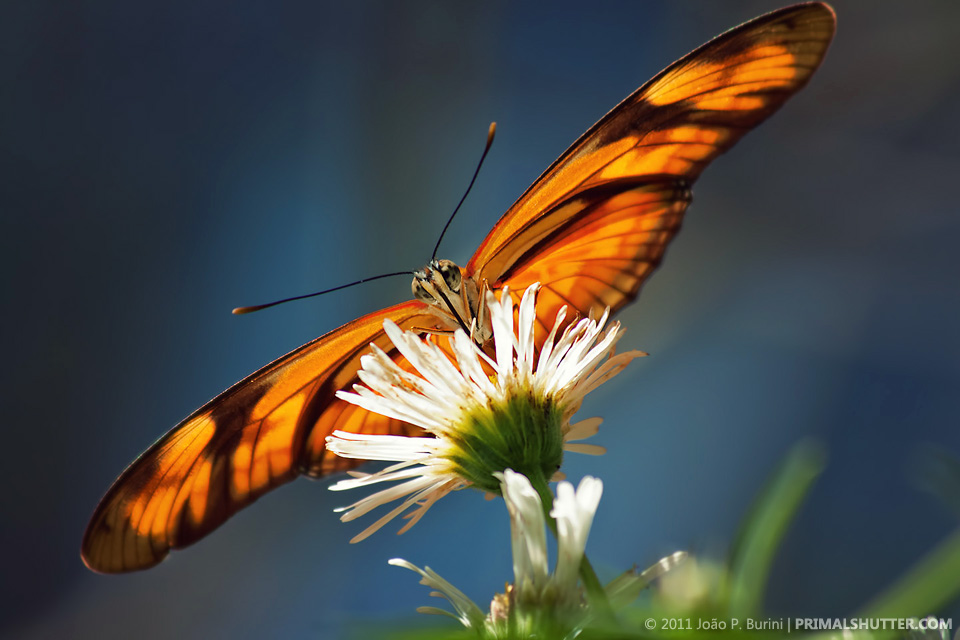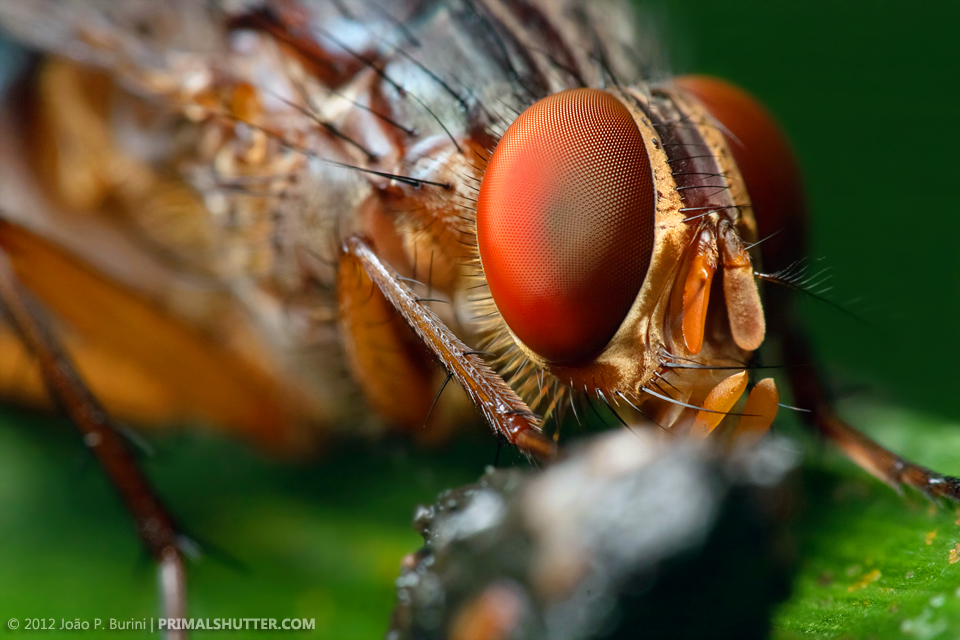This is basically a review I wrote in 2009 right after I got this lens, but updated with the now three years of experience using it.
It has a metal mount, the lens is light (at about 600g) and feels very balanced on my 450D (keep in mind all I say is based in a 1.6x crop camera, I don’t know how it behaves in a fullframe).
Placement of the focus ring is after the zoom ring, which I like. I don’t know if it’s a standard in zoom all lenses but I noticed you can also zoom it by push and pull, instead of using the zoom ring. The aperture ring is built on 8 blades, and with the right background the bokeh is round enough:
 Euphonia chlorotica (Purple-throated euphonia)
Euphonia chlorotica (Purple-throated euphonia)
ISO800 | f/5.6 | 1/250 @280mm + 1.4x TC

Tangara seledon (Green headed tanager)
ISO1600 | f/5.6 | 1/40 @300mm
IS buttons are leveled out of the body placed separatedly from the AF-MF switch, and on the right side of the body there is a 70mm lock. Lens creeping was unexistent when it was new, but with a couple of years of use I can notice a bit of creeping when walking with it, and the lock proves itself useful.
At the dark conditions I shoot the stabilization is a requirement. The effectiveness of this one is rated at 3-stops and it also features the older system of mode 1 for two axis and mode 2 for panning, I’ve seen people saying this lens has a noisy IS but I don’t find it a problem. As oposed with other IS lenses that you don’t know when it starts working, with your eye on the viewfinder you can see a small kick in the image and hear a low pitch noise when it starts spinning, but it’s far from being an annoyance.
When you depress the shutter button it continues to spin for about two seconds, and it’s recommended not to turn the camera off while it’s functioning.
 Chironius bicarinatus
Chironius bicarinatus
ISO1600 | f/5.6 | 1/13 @190mm + 1.4x TC (425mm eq.)
I won’t say ALL pictures taken in such low speed will be sharp, the majority won’t, but it’s possible to achieve it. I find the minimal speed with consistent results to be about 1/80.
Despite being a USM lens the autofocus is not silent and someone a meter away will hear you focusing (it makes a plastic slap sound when it find the focus), I don’t have other USM lenses to compare the speed and am not an AF fan myself so I don’t know how well it behaves in the field, but seems fast enough between one and two seconds from MFD to infinity. I wish it featured a fulltime MF, but the focus ring gets locked down when you switch to AF.
At 1,5m the minimal focus distance of this lens is very good for a tele in this range, and small extension tubes (12 or 20mm) might be useful for reducing the distance even more on “tame” subjects like hummingbirds and flowers. I believe it might get close to 1:1 using a full set of tubes at 70mm, but no more than that.
The lens is marketed with a macro label, but the magnification with isn’t anywhere close to 1:1, like all zooms in this range. If you intend to use it on seriously on macro, it performs very well with close-up filters, easily getting more magnification than with tubes. It features a 58mm filter thread (the front element rotates making it useless for polarizers) and I used it a lot for pictures beyond 1:1 with raynox filters. With +8 of dioptry It works great until about 250mm, at 300mm in high magnifications like 3:1 there is noticeable quality loss. If you already own this lens and want to get into macro, a close-up for it is a very good and way cheaper alternative to a macro lens.
Regarding image quality, this lens is considered a hidden-L by some. At 70mm the fastest aperture is f/4, and has it’s optimal at f/5.6. At 300mm the sharpest aperture is f/8, noticeably sharper than wide-open, and with very little, almost non-existant difference from f/11. Still, in real life shooting I wouldn’t consider shooting it wide open a something to worry about. Some small fringing does exist at the corners. Test pictures were taken in RAW and default LR settings:
100% center crop @300mm (click to view at original size)
100% center crop @70mm (click to view at original size)
Haters exists for every kind of equipment, and if you look in forums around the web you will see a lot of people claiming this lens is unusable wide open beyond 200mm. I don’t think so, and still find it good even with a 1.4x teleconverter pushing it to the limits at 300mm.
Canon teleconverters wont work because of their protuding front element designed for L lenses, instead you can use third party ones, the one I use is a Kenko 1.4 Telepro3000, autofocus hunts a lot and it needs good lighting to work, I say it’s ok to use one if you don’t mind manually focusing and can handle the light loss.

Zenaida auriculata (Eared dove)
ISO1600 | f/5.6 | 1/400 @300mm + 1.4x TC (672mm eq.)
Below are full crops unprocessed and processed.
I am happy with what the image quality this lens provides, and at the same price one that seems to dispute with it is the new stabilized Tamron 70-300, or even the Canon 55-250 5.6 IS, which is cheaper and usually appeals to starters looking for a budget telephoto. I have used one a few times and never done direct comparisions, but the quality seemed very much similar to this 70-300, being a good cheaper option if you can live with 50mm less at the longest range.
Items used in this post:







Just bought this camera and was looking for something about the macro. Your pictures are awesome and I enjoyed the article.
Great little review, thanks.
POTN bought me here.
Agree with you Joao. In fact I don’t see a better option from Canon or any other producer at this price point. I used it twice on my African safaris and regularly do so at home (Bangladesh) with excellent results. If there’s 1 tele lens I need to take for a wild photo shoot; this is the one.
Although it’s sharpest at f/8, surprisingly it’s also quite sharp wide open. May be because there’s one UD glass inside this lens. So, when I encounter low light conditions and don’t wanna push up ISO too much on my crop bodies, just go for widest apertures. I always shoot in RAW and have noticed crop bodies produce quite a bit of noise at ISOs beyond 1000 (which I noticed with my 50D).
Since Canon is making the crop bodies too amateurish with high pixel counts that pure amateurs are fascinated by; I might have to switch to full frame grudgingly being an enthusiast. Knowing fully well I’m not a pro and not in a position to go for premium gears however, I feel committed to produce pro or near pro quality outputs. Through my images I would like draw common people’s attention to conservation.
Very well written article, I got mine for $200 SH and I’m very happy with it. This is my first ‘serious’ lens. Did not got the chance to test it out as it’s been the 4th rainy day since it was delivered, but your images really gives me confidence that I spent my money on the right thing.